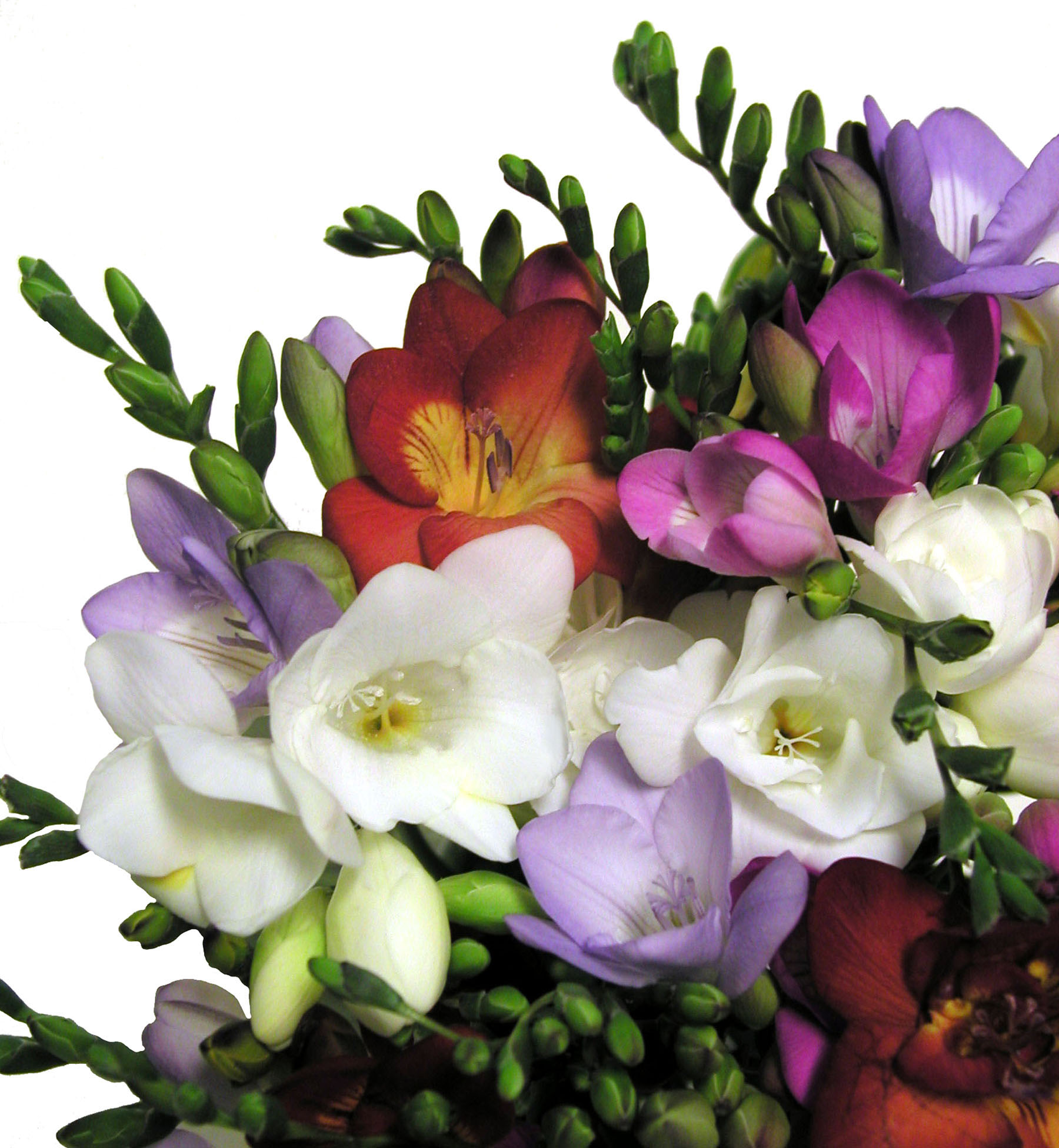Is there any flower as whimsical, playful, and beautiful as freesia?
Their attributes begin with their sequential blooms; they keep opening over time, so each stem has an enormous kinetic energy. Then add their wonderful ambrosia-like scent. Not only that, the color also determines the smell, so there is a lovely fragrance variety in a bouquet of mixed freesias--some are peppery and sharp, others citrusy and tart.
Another nice aspect of freesia is the stem length. They can grow to be quite tall, which gives designers a lot of options for dramatic arrangements, and, of course, they can be cut down shorter for corsages and bouquet work. The elegance of the tall stems are really something to experience.
This mixed bouquet is an excellent example of freesia's versatile stem lengths.
Freesia History
Named after the German physician Dr. Friedrich Heinrich Theodor Freese, this flower is a native of Africa. Apparently, the flower was first brought to Europe in the 1700s, however, due to some errors was never properly classified. In 1870’s the flower was rediscovered growing in the Botanic Gardens of Padua, Italy. After this “rediscovery”, it was somehow reconnected to Dr. Freese, and the Freesia became widely cultivated after 1874.
How They're Grown
The process of growing a Freesia isn’t a simple one; this is because the temperature of the soil is the key factor in having a robust crop.
Here is how it works: Corms are planted directly in the soil, protected by a hoop house. The crop takes a long time to mature, typically between 20-24 weeks. During this time, the soil needs to be kept pretty warm in order to encourage the plants to grow big, tall, and healthy. However, if the soil remains warm, the freesia will never bloom.
Freesia in Hoop Houses
To change the freesia from a vegetative plant to a budding flower, the soil needs to be cooled down so that it will “set bud” (aka produce flowers). Back in the old days, farmers would literally bury water pipes underground among the rows. They would run warm water through the pipes during the vegetative cycle, then start pumping cold water through the pipes when it was time for budding and the subsequent harvest.
Nowadays, that practice is still used by some, but one of the best ways to grow freesia is using the might of mother nature. Plant freesia in spring/summer, when the soil is naturally warm. Then as the season changes to fall, the soil will naturally cool down and freesia will begin budding. The longer the warm-soil season is, the longer the freesia stems will be. This is often why flower farmers will plant freesias in hoop houses--they can better control the temperature and consistency which makes for a better-quality freesia bloom.
Freesia Meanings
Freesia are said to symbolize friendship, innocence, thoughtfulness, perseverance and being high-spirited. It is also the flower given for the seventh wedding anniversary. Contemporary florists, noting its graceful appearance, recommend freesia for someone who has performed gracefully under pressure.





